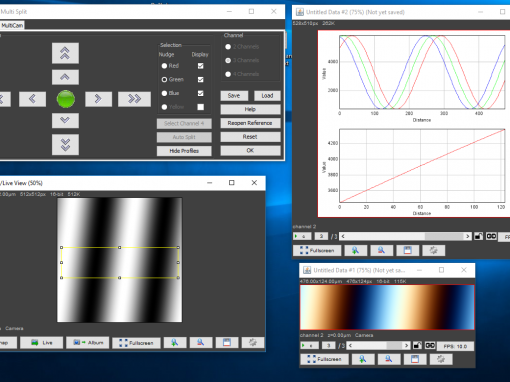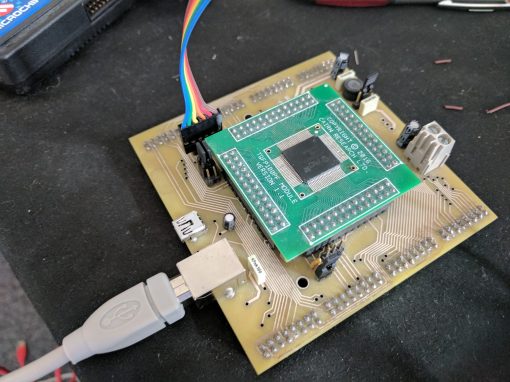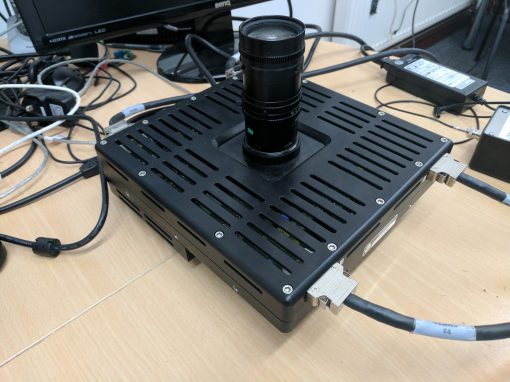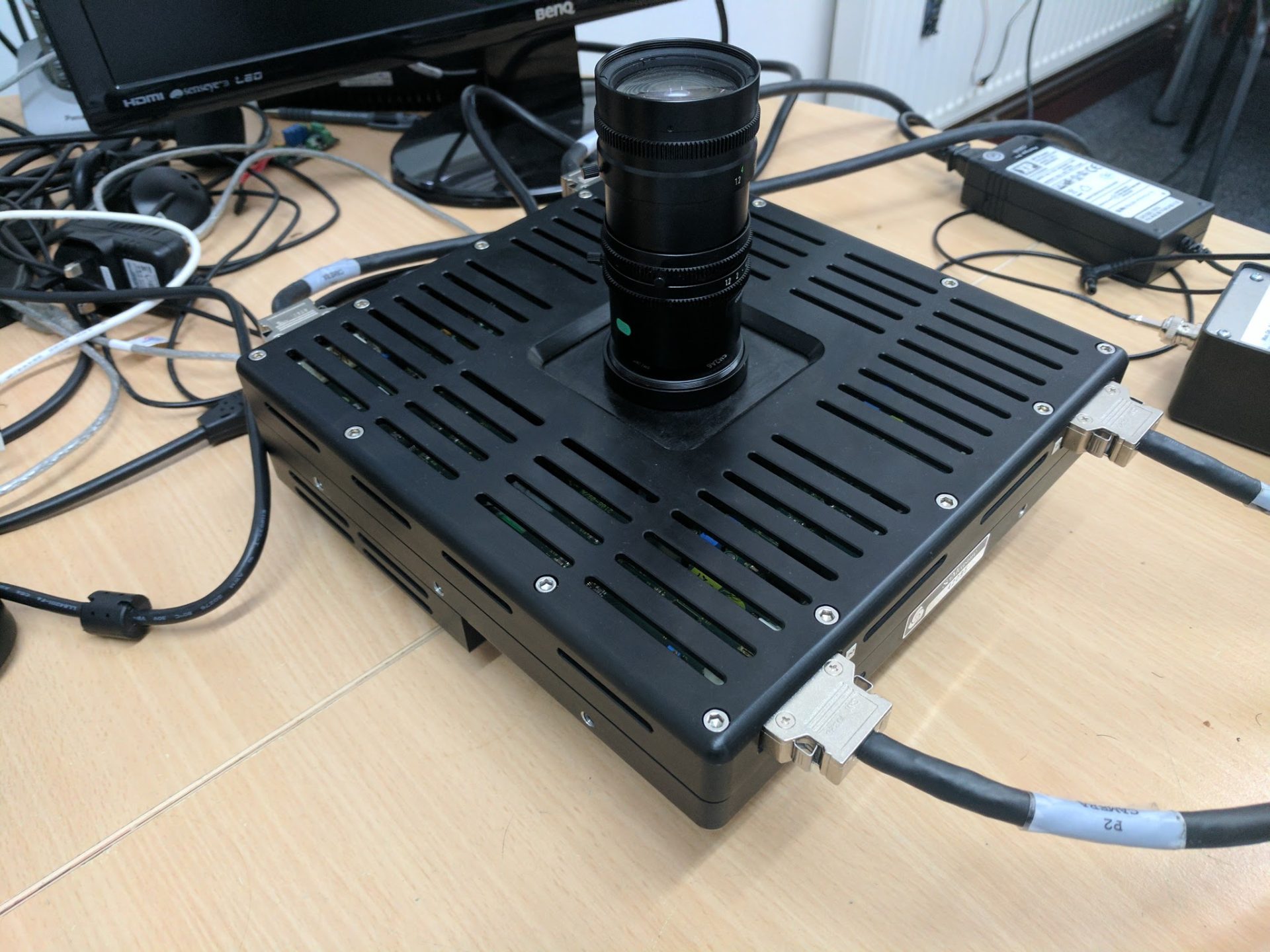Background
In normal cameras for scientific use, the pixels are exposed to light for a set period of time (the exposure or integration period), during which time the light incident on the pixels is converted to charge and stored in capacitors referred to as ‘pixel bins’. At the end of the integration period, the charge level of each pixel is read out, the pixel bins are discharged and exposure starts again. In most camera sensor chips, the reset signal is built in and is automatically applied at readout, however, in traditional CMOS (tCMOS) chips, the reset and readout signals are completely separate. This allows tCMOS based cameras to be run in “Non-Destructive Read” (NDR) mode, where the pixel charge can be read without discharging the pixel bin. This has several benefits, primarily to do with reduction of noise (one of the largest sources of noise in most cameras is caused by discharging the pixel bins) and the ability to effectively choose the exposure time after data acquisition. NDR techniques have already been shown to provide significant benefits in the field of location microscopy [1] and tracking. Cairn is currently investigating the potential benefits of NDR techniques for conventional imaging.
Project
My work in this area has involved working closely with SciMeasure (the company who manufactures the NDR camera that Cairn supplies) to test and improve their proprietary software, and also with the labs that Cairn has sold these cameras to, providing technical support. It has also included improving the µManager device adapter and writing a µManager plugin for the post-processing of image sequences obtained with the camera to provide images suitable for publication.
The “Dv2k Image Adjustments” plugin for µManager performs several post-processing actions that allow NDR “ramped” image stacks to be viewed and analysed as conventional time series. When run in “Correlated Double Sampling” (CDS) mode, the Dv2k suffers from several visual artifacts, which while inconsequential from an analysis point of view, look strange and are unwanted in publications. The CDS section of the plugin provides functions to remove regional offsets caused by slight mismatching of the gains associated with each of the Dv2k’s 16 taps by dark frame subtraction and correction of a time varying per-row offset visible in regions of low light exposure. The NDR section of this plugin provides readout averaging and differencing functionality to reslice the data with different integration periods / time resolutuion including truly overlapped exposure. This unlocks the power of the NDR approach and is useful for drawing comparisons between the Dv2k and more traditional cameras, as well as producing image sequences that can be interpreted by existing video analysis programs.
In the future, I hope to implement Dr Ashley Cadby’s STORM location microscopy algorithm [1] under either µManager or ImageJ to allow labs without access to MATLAB to benefit from this technique.
Skills:
Communication and teamwork
C/C++
Java
Cairn Projects




